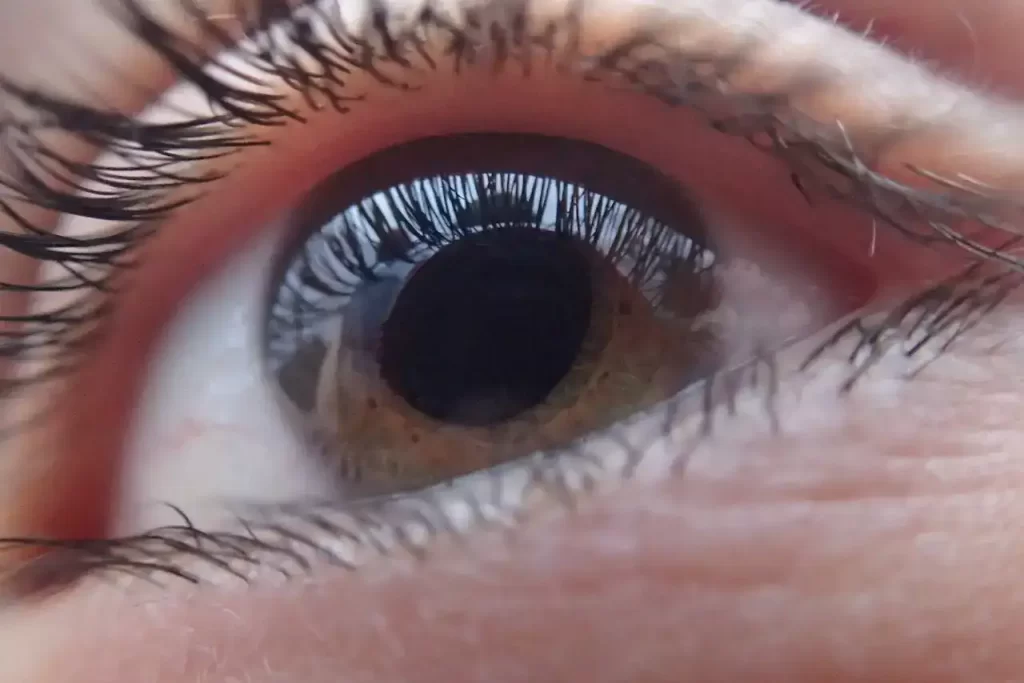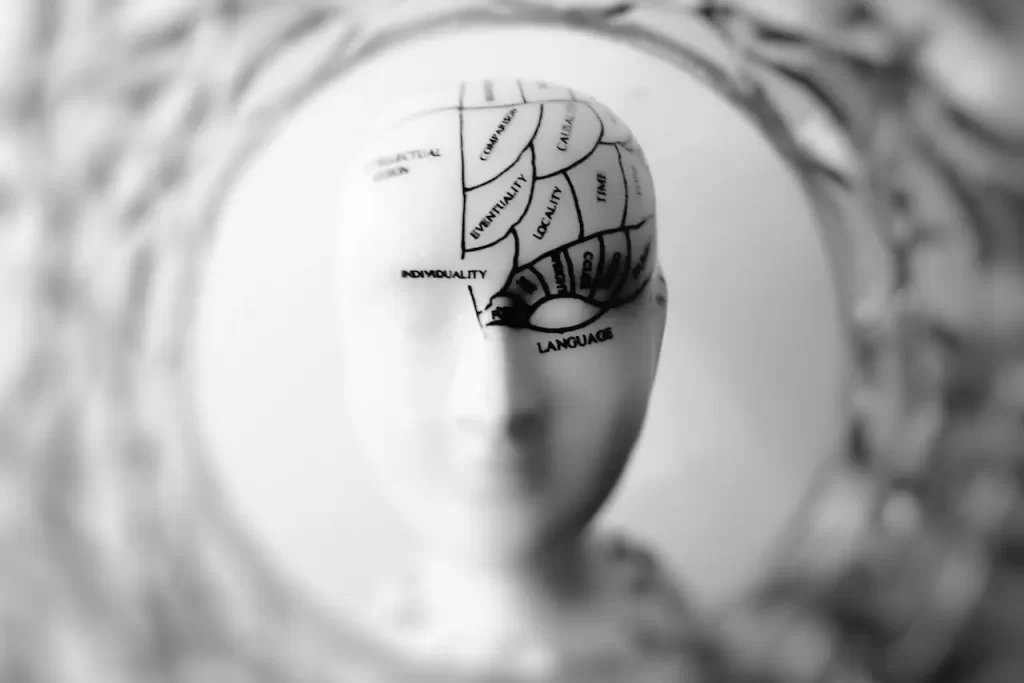The human brain is an incredibly complex organ that has puzzled scientists and researchers for centuries. With over 100 billion nerve cells and 100 trillion synapses, the brain is the control center for every thought, emotion, and action we take. Despite significant advances in biotechnology and neuroscience, there is still so much we don’t know about how the brain works. In fact, scientists are still discovering new things about this mysterious organ every day.
In this article, we’ll explore 8 mind-blowing theories that challenge fundamental cognitive concepts. These theories push the boundaries of what we thought we knew about the brain and force us to question our understanding of consciousness, perception, and even the very nature of reality itself. From the idea that we are all living in a simulation to the notion that our brains are actually predicting the future, these theories are sure to blow your mind.
So buckle up and get ready to dive deep into the fascinating world of neuroscience. Whether you’re a student of the brain or just a curious reader, these theories are sure to leave you with a new appreciation for the incredible complexity of the human mind. So let’s get started and explore some of the most exciting and thought-provoking theories in modern neuroscience.
Passive Frame Theory
Passive Frame Theory challenges one of the fundamental assumptions we hold about ourselves – that our consciousness is the one that interprets and interacts with the world. According to this theory, our consciousness is not as active as we think it is. In fact, it proposes that our consciousness plays a passive role and doesn’t have any choice or free will.
But if consciousness isn’t the one calling the shots, then what is? The theory suggests that other parts of the brain, such as the motor system or the sensory cortex, are the ones that stimulate action. Consciousness only comes in after the action has been initiated, providing a justification for the automatic impulses.
This theory may seem unsettling, as it challenges our sense of agency and autonomy. But it also offers a new perspective on how the brain works. Instead of seeing consciousness as the driving force behind our actions, we can start to appreciate the complexity and diversity of the brain’s functions.
Passive Frame Theory also has implications for our understanding of mental disorders. If consciousness is not as active as we thought, then disorders like depression or anxiety may not be solely caused by “negative thinking” or a lack of willpower. Rather, they may be rooted in underlying neurobiological mechanisms that we are only beginning to understand.
Overall, Passive Frame Theory is a mind-blowing idea that challenges our most basic assumptions about ourselves. It invites us to rethink what it means to be conscious and to appreciate the complexity and diversity of the brain’s functions.
Single Neuron Theory
Have you ever wondered how our brains process information and create consciousness? The Single Neuron Theory proposes that our brains contain 100 billion conscious cells, each with its own subjectivity and impact. This theory challenges the traditional view of the brain as a single entity that creates a unified consciousness.
According to this theory, neurons in areas of the brain responsible for cognitively complex tasks are more influential than those in areas controlling unconscious functions. Moreover, the brain may only activate one group of neurons at a time, giving the illusion of a singular and unified consciousness. It is fascinating to think that our perception of reality is just an illusion created by the firing of specific groups of neurons.
The Single Neuron Theory suggests that each neuron is capable of independent thought, which means that our brains are made up of billions of individual consciousnesses working together. This theory provides a unique perspective on the nature of consciousness and how it emerges from the brain’s neural network.
While the Single Neuron Theory is still a subject of debate among scientists, it opens up new avenues for understanding how consciousness arises in the brain. If this theory is true, it could help explain why different people have such varied experiences of the world around them.
The Single Neuron Theory offers a fascinating perspective on the nature of consciousness and how it arises in the brain. It suggests that our perception of reality is an illusion created by the firing of specific groups of neurons, and that each neuron has its own consciousness. The implications of this theory are far-reaching and could lead to new discoveries in the field of neuroscience.
Time Slices
Another mind-blowing theory that challenges our fundamental cognitive concepts is the Time Slices theory. According to this theory, our perception of time is an illusion, and our brain processes information in discrete time slices. This theory breaks down the temporal processing into two stages.
In the first stage, the brain unconsciously perceives vague pieces of information that last for about 0.4 seconds. During this stage, our brain is not yet fully aware of what’s happening around us, but it’s still collecting data.
In the second stage, the brain starts to hone in on actual details, figuring out what’s happening, and giving meaning to each slice of time to store in memory. It is during this stage that we consciously become aware of our surroundings.
The brain experiences time as a string of tiny moments, each lasting for about 0.4 seconds, which creates the illusion of a consistent and coherent time. This theory challenges the assumption that our perception of time is continuous and constantly flowing.
Time Slices theory has profound implications for our understanding of consciousness, memory, and perception. It suggests that our perception of time is not as continuous as we might think and that we rely on our memory to create a sense of continuity in our lives. This theory also explains why we often have trouble remembering events that occur in rapid succession, like a series of numbers or letters flashed on a screen for only a brief period.
Panpsychism
Have you ever stopped to wonder if everything around us could have some form of consciousness? Well, that’s precisely what the theory of Panpsychism suggests. According to this theory, every single material thing in the universe, from rocks to atoms, has some level of consciousness.
This idea might seem a bit far-fetched at first, but it challenges the traditional belief that consciousness is something exclusive to the most complex creatures, such as humans and animals. Instead, Panpsychism proposes that the fundamental building blocks of our world also have some degree of subjective experience.
One of the most interesting aspects of Panpsychism is that it provides a possible explanation for the birth of consciousness. According to this theory, consciousness isn’t something that emerges from the complexity of the brain or nervous system. Instead, it’s an inherent property of matter that’s present in everything, even inanimate objects.
Of course, this theory isn’t without its critics. Some argue that it’s difficult to prove or disprove the existence of consciousness in something like a rock or an atom. However, the fact that Panpsychism is even being discussed and debated shows that the traditional understanding of consciousness is being challenged and expanded.
So, the next time you look at the world around you, consider the possibility that everything, even the tiniest atom, might have some form of consciousness. It’s a fascinating idea that could change the way we think about ourselves and our place in the universe.
Brain in a Vat
Have you ever stopped to consider whether the world around you is actually real or just a figment of your imagination? Well, that’s the basis of the “Brain in a Vat” theory. This mind-bending thought experiment challenges our perception of reality and asks us to question whether we can ever truly know what’s real and what’s not.
The idea behind the theory is that our brains are being stimulated with electrical impulses from an external source, creating the illusion of reality. In this scenario, everything we think we know about the world is just a fabrication of our minds, and we have no way of knowing what’s real and what’s not.
This may seem like an outlandish idea, but it’s a concept that has been explored by philosophers and scientists alike. The “Brain in a Vat” theory challenges us to think beyond our everyday experiences and consider the possibility that our reality may not be as concrete as we once thought.
So, how can we know whether we’re living in a real world or just a simulation? Unfortunately, there’s no easy answer to this question. Some argue that it’s impossible to ever know the truth, while others believe that there may be clues in the nature of our experiences.
Regardless of where you stand on the “Brain in a Vat” theory, it’s a fascinating concept that encourages us to think deeply about the nature of reality and our place within it. It’s a reminder that our perceptions and beliefs may not always be as certain as we think, and that the world around us may be more mysterious than we ever imagined.
The Extended Mind
Have you ever considered the idea that your mind could extend beyond your brain? The extended mind theory proposes that our minds are not just confined to our brain but can also include our environment and even other people. This means that our cognitive abilities can be enhanced by external factors, such as technology.
The theory suggests that objects and tools we use can become a part of our extended mind. For example, a calculator can be seen as an extension of our brain’s ability to perform mathematical calculations.
Similarly, a notebook can serve as an external memory storage system. By using these external resources, we can offload some of the cognitive load from our brains, freeing up mental resources for other tasks.
The extended mind theory also suggests that social interactions can be a part of our extended mind. When we collaborate with others, we can achieve more than we could on our own. Our cognitive abilities are not just limited to our individual brains but can be enhanced by the collective intelligence of a group.
Finally, the theory explores the possibility that technology could further extend our minds. For example, wearable technology such as smartwatches or augmented reality devices could enhance our ability to perceive and interact with the world around us. Artificial intelligence and machine learning could also be used to augment our cognitive abilities.
The extended mind theory challenges our traditional notions of what constitutes the mind and suggests that we should view our cognitive abilities as more than just the sum of our individual brain processes. By expanding our understanding of the mind, we can open up new possibilities for enhancing our cognitive abilities and exploring the potential of human intelligence.
Modular Mind
Have you ever thought about how different parts of your brain work together to form your thoughts, feelings, and behaviors? The modular mind theory suggests that the brain is made up of specialized modules that work together to create our cognitive processes.
According to this theory, each module has a specific function, such as perception, language, or memory. These modules are like specialists that contribute to our overall cognition, similar to how different organs in our body serve specific purposes.
The modular mind theory challenges the idea that the brain is a single entity, and suggests that it’s more like a collection of specialized tools. This means that different parts of our brain may have independent functions and can work in isolation or together to create complex cognitive processes.
For example, the language module may be responsible for speech and language production, while the visual perception module may be responsible for processing visual information. These modules can work together to create the experience of reading, where the language module processes the words and the visual perception module processes the letters and their arrangement.
Overall, the modular mind theory offers a unique perspective on how the brain works and challenges the traditional view of the brain as a single entity. It suggests that the brain is a complex and interconnected system of specialized modules, working together to create our thoughts, feelings, and behaviors.
Consciousness Is an Illusion
Have you ever stopped to wonder what consciousness really is? Is it a tangible thing, or just an illusion created by our brains? Well, according to the theory of Consciousness as an Illusion, the latter might just be true.
This theory suggests that our perception of consciousness is an illusion created by our brains. It proposes that we can still have thoughts and make decisions without being consciously aware of them. This is because our brains are constantly processing information and making decisions on their own, without us even realizing it.
This idea challenges the traditional belief that consciousness is an essential part of our being and that it’s what separates us from non-living things. In fact, this theory suggests that everything, including non-living things, may have some degree of consciousness.
The concept of an illusionary consciousness also brings up some interesting questions about free will. If our decisions are being made unconsciously, do we really have free will? Or are our actions predetermined by the automatic processes of our brain?
While this theory may seem a bit unsettling, it does offer a unique perspective on the nature of our minds. It suggests that our sense of self and our conscious experiences may not be as concrete as we once believed. Instead, they may be more malleable and subject to change based on the way our brains are wired.
Overall, Consciousness as an Illusion is a fascinating theory that challenges our traditional views on consciousness and free will. It offers a new way of thinking about the mind, and may even open up new avenues for research into the mysteries of consciousness.
Conclusion
In conclusion, these theories present a fascinating look into the human brain and how it functions. They challenge traditional assumptions about consciousness, reality, and intelligence and provide new perspectives for understanding the world around us.
The single neuron theory suggests that the brain is made up of billions of conscious cells, each with its own subjectivity and impact.
Time slice theory breaks temporal processing into two stages, suggesting that our brain experiences time as a series of tiny moments to create the illusion of a consistent and coherent time.
The panpsychism theory proposes that every material thing in the universe has some fragment of consciousness, challenging the idea that subjective consciousness is reserved for only the most neurologically developed species.
The brain in a vat thought experiment questions our perception of reality and asks how we can know what’s real and what’s not.
The extended mind theory proposes that our mind extends beyond our brain, considering the possibility that technology could enhance our minds and create new forms of intelligence.
The modular mind theory suggests that our brain has evolved into different modules, each with a specific function, challenging the idea that our brain is a single entity.
Finally, the consciousness as an illusion theory proposes that our perception of consciousness is an illusion created by our brains, challenging the idea that consciousness is an essential part of our being.
These theories demonstrate that our understanding of the human brain is constantly evolving, and there’s still much to learn. They offer new insights into how we perceive the world, how we think, and what it means to be conscious. As scientists continue to explore the mysteries of the brain, we may discover even more mind-bending theories that challenge our assumptions and change our understanding of the world around us.





